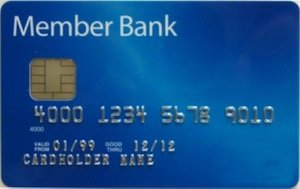What Are EMV Credit Cards
While the rest of the world has been using EMV cards for a long time now, the US has been late to adopt the cards – due to costs involved in changing the terminals that can read EMV cards. The information in cards with magnetic cards can easily be stolen by fraudsters who later use the information for their own benefit by shopping or selling off the information on the darknet. The change to EMV credit cards is happening primarily because of the massive data leaks seen at large brick-and-mortar and online retailers. Chip cards will make it nearly impossible to do anything with illegally acquired credit card numbers because of the increased security protocols. Read our article on Credit Card skimming to know how fraudsters steal information from magnetic stripe cards. EMV cards are also known as IC (Integrated circuits) cards as the chip is basically a firmware type chip containing the information required to conduct debit and credit transactions. As of now, the following companies provide and support EMV cards: With so many companies offering compatibility with the EMVs, the cards can be useful anywhere in the world. Only recently did the US ask institutions to provide chip-based cards to their users. Some such institutions are American Express, Bank of America, Barclay Card, Capital One, JP Morgan, Citibank, and Discover among others. You can get your magnetic card replaced or get one EMV card as an addition to the existing card, depending upon your needs. The EMV Cards are of two types:
Chip and PIN Cards
To counter the illegal use of cards, each transaction must be followed by some activity by the cardholder. This activity could be entering a PIN similar to the debit card PINs or can be the card holder’s signature. Based on what needs to be accompanied, EMV cards are categorized into Chip and PIN or Chip and Signature cards. A Chip and PIN card requires the cardholder to enter a four-digit PIN similar to the ones used in ATM with debit cards. However, not every institution accepts CHIP and PIN cards. They are better used at unmanned terminals such as parking places, automatic ticketing, etc. The cardholder just swipes the card and enters a print. Chip and PIN cards are useful when there are no attendants present at the transaction terminals. The majority of other traders prefer cardholders’ signature. Read: How do you protect yourself against Carding credit card fraud?
CHIP and Signature Cards
As evident from the name, Chip and Signature cards require the cardholders to sign on a piece of paper that comes up after a machine reads the card’s chip. Most traders prefer a signature to a PIN because a signature would mean a better guarantee of anti-theft cards. Where there are attendants such as the supermarkets, Chip and signature EMV cards are used more. Most of the banks offer you the Chip and Signature card as they are more secure compared to Chip and PIN. Even Chip and PIN are secure as the data is erased from card readers as soon as the transaction is complete. Both “Chip and PIN” and “Chip and Signature” cards increase the level of security over regular cards with magnetic strips. With EVM cards, one need not worry about data being stolen. Thoughts?

